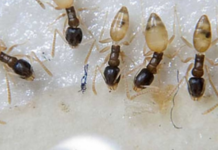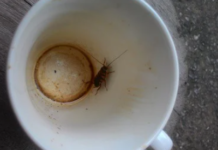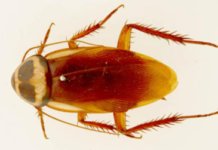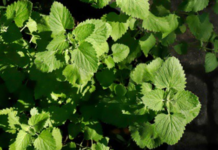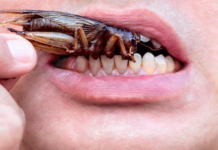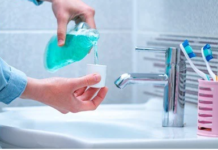Do cockroaches eat mold? Cockroaches being known to eat almost anything one would assume that they can eat mold too. The truth is that cockroaches don’t feed on mold. In fact, roaches and mold are known to thrive in the same environment and eat similar food. In reality, they both love warm, dark and damp spaces. This clearly shows that if you find mold it means that roaches are nearby and converse is true. Learn more.
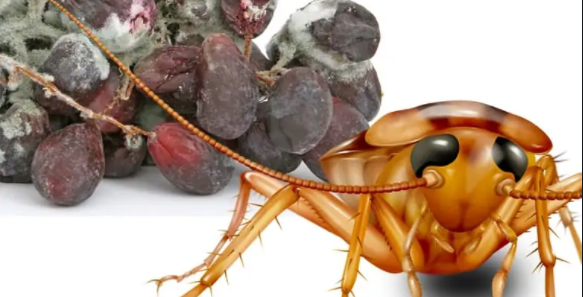
Also Read: What Do Cockroaches Eat?
Do cockroaches eat mold? Roaches don’t eat mold. Instead, they eat similar food as mold. As you know, mold tend to grow on all sort of matter and thereafter begin to break down. It helps roaches to eat food that are difficult to eat. Since mold thrive in the same environment as roaches, the musty scent of mold provides a perfect home conditions for cockroaches to come closer to your home.
In addition, roaches tend to act as hosts to mold spores. Just like bees carry pollen around, roaches carry mold spores to new locations. Surprisingly, mold can grow on roaches themselves without causing any bodily harm.
Do cockroaches Like Mold?
Roaches have no reason not to like mold. Note that both roaches and mold thrive in the same environment: dark, damp and warm places. As pointed out, where there is mold you are likely also to have roaches nearby. Mold and roaches live side by side without conflict. This is mutual kind of relationship.
It is important to note that, cockroach nymphs also thrive in a moldy environment. Mold are resourceful in the sense that they create more food resources. In fact, mold soften difficult matter that may be difficult for roaches to eat. Mold can soften paper, cardboard and even paint to make it easy for the roaches and their nymphs to eat. Mold can destroy furniture such that it can have holes, gaps where the roaches can hide.
Are Cockroaches Attracted To Mold?
Yes, cockroaches are attracted to mold. Although roaches will eat anything that provides nutrients to them, roaches are not attracted to mold as food. Note that mold in itself is a living organism which means that it also requires food and water just like roaches to survive. Roaches and mold only exist close or in the same environment.
Just like roaches, mold thrive in damp, dark and warm place where it will grow and feed on anything organic. This means that where there is moisture and food, mold are most likely to grow there.
Roaches tend to have a strong sense of smell- Applied Mechanics and Materials. This gives the roaches a natural ability to detect mold growth even from quite far. Mold produces a musty odor easy for the roaches to smell.
Mold signify to roaches that there is food and water available. Note, mold begin to break down on whatever it grows upon. This makes it easy for roaches to feed on whatever food may appear difficult to feed on. This means that mold tend to soften matter or food that may be difficult for roaches to feed on. This is the same reason other insects like mites and beetles are attracted to fungus and mold; to break down or soften matter for easy consumption.
Is Mold A Sign of Cockroaches?
Is mold a sign of cockroaches? Note that mold thrive in a damp, dark and warm places. This conditions are similar to what attract roaches. This could mean that having mold around your homes is a clear sign of roaches arriving soon or living nearby. Although mold tend to grow independently, but having mold on your walls or floors is indication of excess moisture that also attract cockroaches.
To keep away roaches from invading your home, make your home as clean as possible free from moisture that make the mold to thrive. Cockroaches love dark, damp and warm places such as the cupboard under the sink, in corners with damaged water, damaged pipes leaking water and under electric appliances.
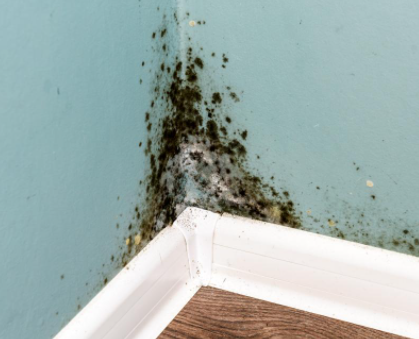
Cockroaches are the most resilient pests that you may find it hard to get rid of. Mold growth attract roaches since these two creatures thrive in the same condition and can lively mutually without one harming the other. Mold also tend to give off a musty smell that draws cockroaches; which is in most cases a sign of food, moisture and shelter.
Does Mold Grow On Cockroaches?
As mentioned earlier in the post, mold and roaches thrive in the same environment. In reality, where there is mold growth, roaches are either nearby will start to arrive soon. Roaches and mold both need moisture to survive, live in a dark and warm place. This clearly indicates that roaches host mold cultures.
According to a study on Madagascar hissing cockroaches, it was found out that this species of roaches host many types of mold. It was found – symbiosis – out that several common fungi and mold were found on the roaches. They include: mucor, penicilium, Trichoderma, aspergillus, etc.
Cockroaches living in the wild also host mites in a symbiotic relationship: the mites eat mold, fungi and parasite that can be considered dangerous to the roaches. Wild cockroaches also tend to host mold spores meaning just like the bees do carry flower pollens, the roaches spread the mold to other areas. Since roaches cannot clean themselves, you may see the mold grow on and within their bodies. This is obvious reason of mold growth in your home.
Does Mold Kill Cockroaches?
As discussed in the post, there are different variants of mold that may grow in your home. While some may be dangerous, implying that these type could kill roaches, it has not been verified whether this school of thought is true. So far, no scientific proof can ascertain this. You would assume if a cockroach had an open wound, mold spores could infect its rather inner fragile body. If that would be the case, mold could eventually lead to the death of the cockroaches. But there is no scientific record to confirm this.
Does Getting Rid of Mold Deter Roaches?
It is true to say mold attract roaches. In really sense, where there is mold growth, roaches are likely to live in the same environment. So if you get rid of mold, you will have succeeded to some extent in reducing the population of roaches and their infestation.
Here’s how to deal with mold to deter roaches:
Get Rid of the Cockroaches
To get rid of molds begins with eliminating of cockroaches. Depending on the level of infestation of the cockroaches, you can either seek the service of pest control professional or use DIY methods.
Also Read: How To Get Rid Of Cockroaches, Effectively & Best Roach Killers Review
As soon as you get rid of the roaches, make sure to clean up: the dead roaches, eggs, molted and any remaining feces. Mold tend to grow on and eat all sort of decaying matter including cockroach bodies and their feces.
Get Rid of the Mold
Once you’ve eliminated the roaches, it’s time to get rid of the mold. Use chemicals or natural cleaners to wipe and scrub down all the surfaces with mold using the cleaners. Clean and wipe down all nearby surfaces as a way to prevent future growth of mold. Finally, dispose off contaminated or damaged objects such as stack of papers and cardboard boxes.
Note that mold spores are airborne and some can result to respiratory problems. Always wear a mask and gloves for safety while eliminating the mold, this is particularly to those who are asthmatic.
Prevent the Problem from Reoccurring
Once you are done eliminating the roaches and mold, take further measures to keep and prevent the problem from happening again. This involve creating an environment where the roaches and mold cannot survive. Fix leaks in roofs and plumbing or any other damp sources to deprive the roaches and mold the conditions to thrive. In extreme cases, you may need a dehumidifier especially if the paces experience high humidity.

